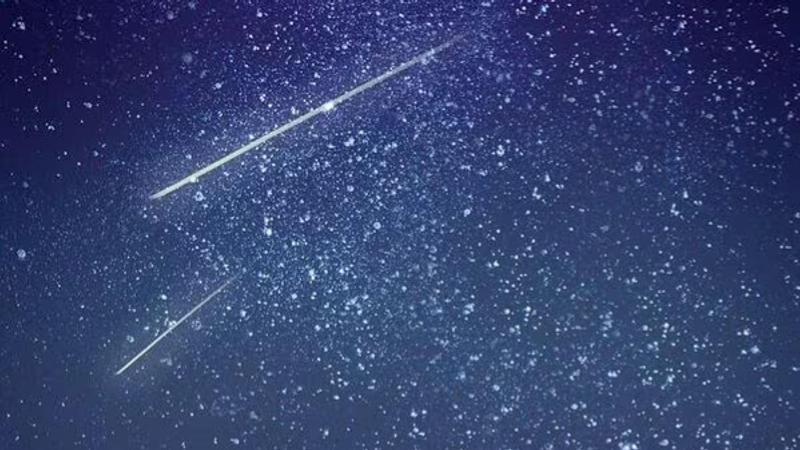Published 17:45 IST, December 30th 2024
Quadrantids Meteor Shower 2025: Where and When to Watch in India
The Quadrantid meteor shower, currently active, will continue until January 16, 2025. However, its peak will occur on the night of January 2-3, 2025 in India.

Quadrantid Meteor Shower 2025: A spectacular celestial event will kick off the New Year 2025, with the Quadrantid meteor shower peaking on January 3 and 4. It has been visible since December 27.
The Quadrantids are known for their short but intense peak and frequent bright fireballs. Unlike most meteor showers, which come from comets, the Quadrantids are linked to the 2003 EH1 asteroid, which could be a "dead comet" or a "rock comet," according to NASA.
Meteors happen when Earth passes through the debris left behind by a comet or asteroid.
Quadrantid Meteor Shower 2025
The Quadrantid Meteor Shower happens every year in early January, but it only lasts for a few hours at its peak, unlike most meteor showers that last for one or two days. This short peak is because the stream of particles that cause the shower is very narrow, and the Earth passes through it at a perpendicular angle.
During the peak, you can see between 60 and 200 meteors per hour if the sky conditions are perfect.
The shower is named after a constellation called Quadrans Muralis, which was introduced in 1795 by French astronomer Jerome Lalande. However, this constellation is no longer recognized by the International Astronomical Union, so it’s no longer considered an official constellation.
Quadrantid Meteor Shower 2025: When and where to watch in India?
The Quadrantid meteor shower, currently active, will continue until January 16, 2025. However, its peak will occur on the night of January 2-3, 2025 (January 3-4 in India).
According to Sumit Srivastava, senior scientific officer at the Indira Gandhi Planetarium in Lucknow, the Quadrantids will be visible in the city on January 3 and 4. During this period, observers can expect to see between 80 and 120 meteors per hour.
Since the meteor shower will be visible in the early morning hours, the planetarium has arranged telescopes for public viewing of this celestial event.
Best viewed in the Northern Hemisphere, the Quadrantids will remain active until Thursday, January 16.
Best Viewing Times:
For the best chance to observe the Quadrantids, head out during the early morning hours before dawn, when the sky is darkest. In India, the prime viewing window will be from around 3:00 AM to 5:00 AM IST on January 3 and 4.
Ideal Locations:
To enhance your viewing experience, choose a spot away from city lights to reduce light pollution. In New Delhi, popular stargazing spots include the India Gate lawns, the Yamuna Biodiversity Park, and the Garden of Five Senses. For even clearer skies, consider traveling to rural areas or hill stations nearby.
Viewing Conditions:
Clear skies are crucial for optimal viewing. As of December 30, 2024, New Delhi is forecasted to have mostly clear skies, with minimal cloud cover expected during the peak viewing times on January 3 and 4. However, it’s recommended to check the weather closer to the dates to confirm ideal conditions.
Additional Tips:
Prepare for the Cold: Early mornings in January can be quite chilly in Delhi, so dress warmly.
Bring Equipment: While the Quadrantids are visible to the naked eye, binoculars or a telescope can provide an enhanced experience.
Prioritize Safety: Ensure you're in a secure location, particularly if venturing into more remote areas.
By planning ahead and selecting the right location, you can fully enjoy the stunning display of the Quadrantid meteor shower.
Updated 17:45 IST, December 30th 2024



